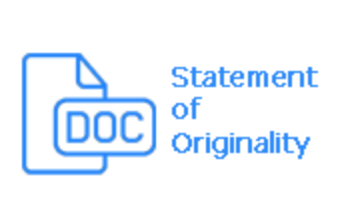KNOWLEDGE OF COMMUNICATION ADAPTATION AS STABILIZATION OF PERFORMANCE ON INDUSTRIAL DISTRICT
Abstract
that places are not important but for some industry players and consumers to determine. Research aims to offer practical and implementable solutions for industry players so that their performance is at a minimum before or after moving to an industrial district. Journal research methods are used in this study with journal sources originating from reputable international journals and scopus indexed. The concept of the model of knowledge of communication adaptation is our finding. The concept model is derived from the industrial district theorem and organizational knowledge typology. Knowledge of communication adaptation is a mediating alternative between government perceptions and industry players. Concept definitions are explained in this study.
Keywords
Full Text:
PDFReferences
Alfred Marshall,(1842-1924). Blackwell Publishing for the Royal Economic Society. The Economic Journal, Vol. 34, No. 135 (Sep., 1924), pp. 311-372
Arikan, (2009). Interfirm Knowledge Exchanges and The Knowledge Creation Capability of Clusters
Barley,(2016) Valuing Multiple Trajectories Of Knowledge- A Critical Review And Agenda For Knowledge Management Research
Becattini, G. (1990), “The Marshallian Industrial District as a Socio-Economic Conceptâ€, in: Industrial Districts and Inter-firm Cooperation in Italy, Pyke, F., Becattini, G. and Sengenberger, W. (eds), Geneva, IILS.
Cooke, P. (1999). The co-operative advantage of regions. In Barnes, T.J. and Gertler, M.S. (eds). The New Industrial Geography: Regions, Regulation and Institutions. London: Routledge. 54-73.
Dadush, Uri., (2014). The Effect of Low-Skilled Labor Migration on the Host Economy. Senior Associate, Carnegie Endowment for International Peace, udadush@ceip.org.
Dierickx, I. and K. Cool. (1989). 'Asset stock accumulation and sustainability of competitive advantage', Management Science, 35, pp. 1504-1511.
Grant,R.M. (1996a). Toward a knowledge-based theory of the ï¬rm. Strategic Management Journal, 17 (Winter Special Issue),109–122.
Henderson, R. and I. Cockburn (1994). 'Scale, scope and spillovers: The determinants of research productivity in drug discovery', NBER working paper no. 4466, revised.
Heidi K. Gardner,et,al, 2012) Dynamically Integrating Knowledge in Teams: Transforming Resources into Performance
Lawson, C. (1997). ‘Towards a competence theory of the region’. Cambridge, UK. ESRC Centre for Business Research Working Paper No. 81.
Lunenburg, F. C., & Ornstein, A. O. (2008). Educational administration: Concepts and practices. Belmont, CA: Cengage/Wadsworth.
Matusik, S. and Hill, C.W.L. (1998). ‘The utilization of contingent work, knowledge creation and competitive advantage’. Academy of Management Review, 23, 680-697.
Peteraf, M., &Shanley, M.1997.Getting to know you:A theory of strategic group identity. Strategic Management Journal, 18:165–186.
Nelson, R., & Winter, S. (1982). An evolutionary theory of economic change. Cambridge, MA: Belknap Press.
Reed, R., & De Fillippi, R.J. (1990). Causal ambiguity, barriers to imitation, and sustainable competitive advantage. Academy of Management Review, 15,88–102.
Ronald E. McGaughey, (2002),"Benchmarking business-to-business electronic commerce", Benchmarking: An International Journal, Vol. 9 Iss: 5 pp. 471 – 484
Tallman, S., Jenkins, M., Henry, N. and Pinch, S. (2004). ‘Knowledge, clusters and competitive advantage’. Academy of Management Review, 29, 258-271.
Weick, K. E. and Browning, L. D. (1986). “Argument and narration in organizational communication,†Journal of Management, ISSN 0149-2063, 12: 243-59.
DOI: http://dx.doi.org/10.30659/ijibe.4.1.595-600
Refbacks
- There are currently no refbacks.

This work is licensed under a Creative Commons Attribution-ShareAlike 4.0 International License.
IJIBE (International Journal of Islamic Business Ethics) has been Indexed by













